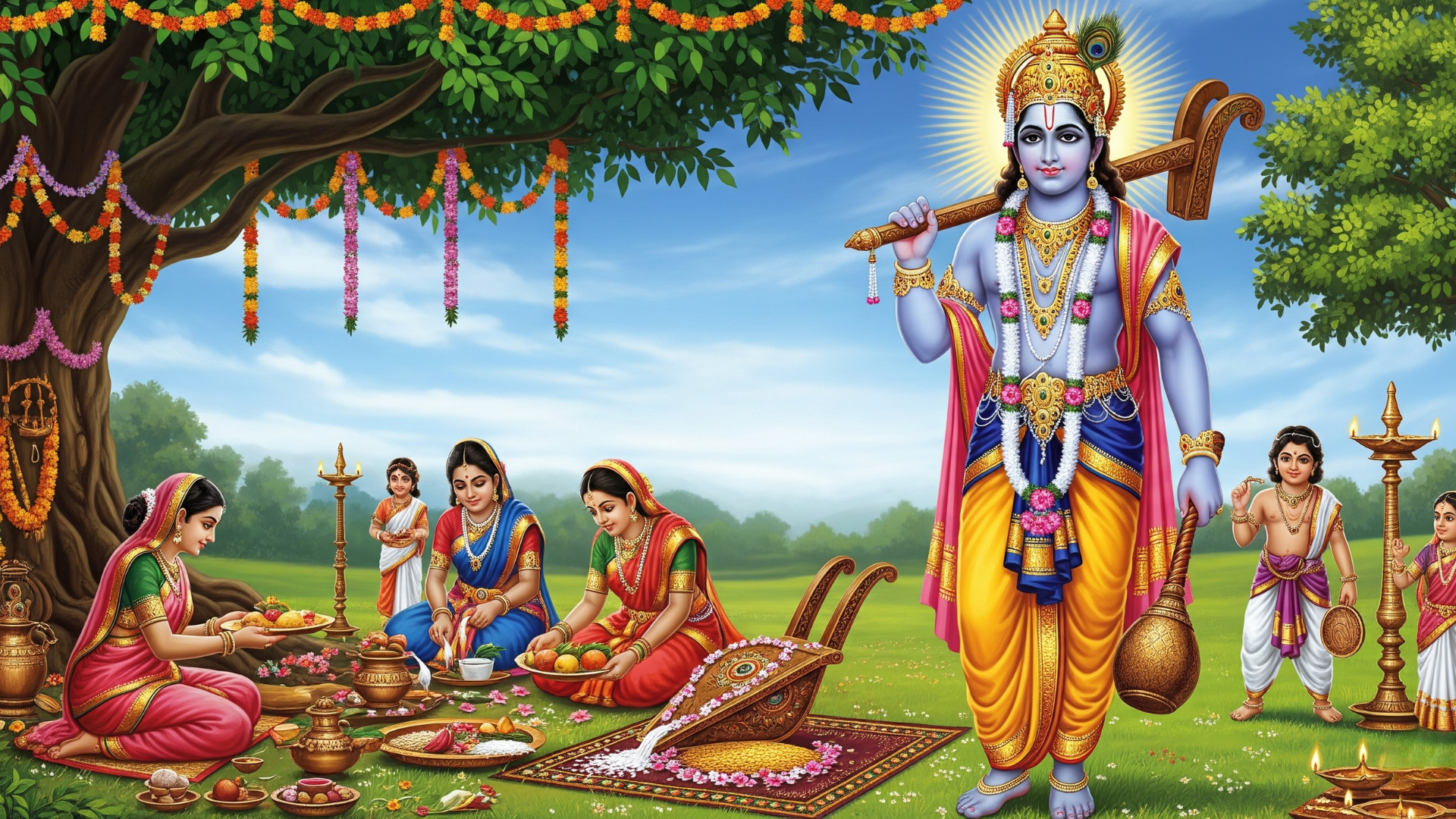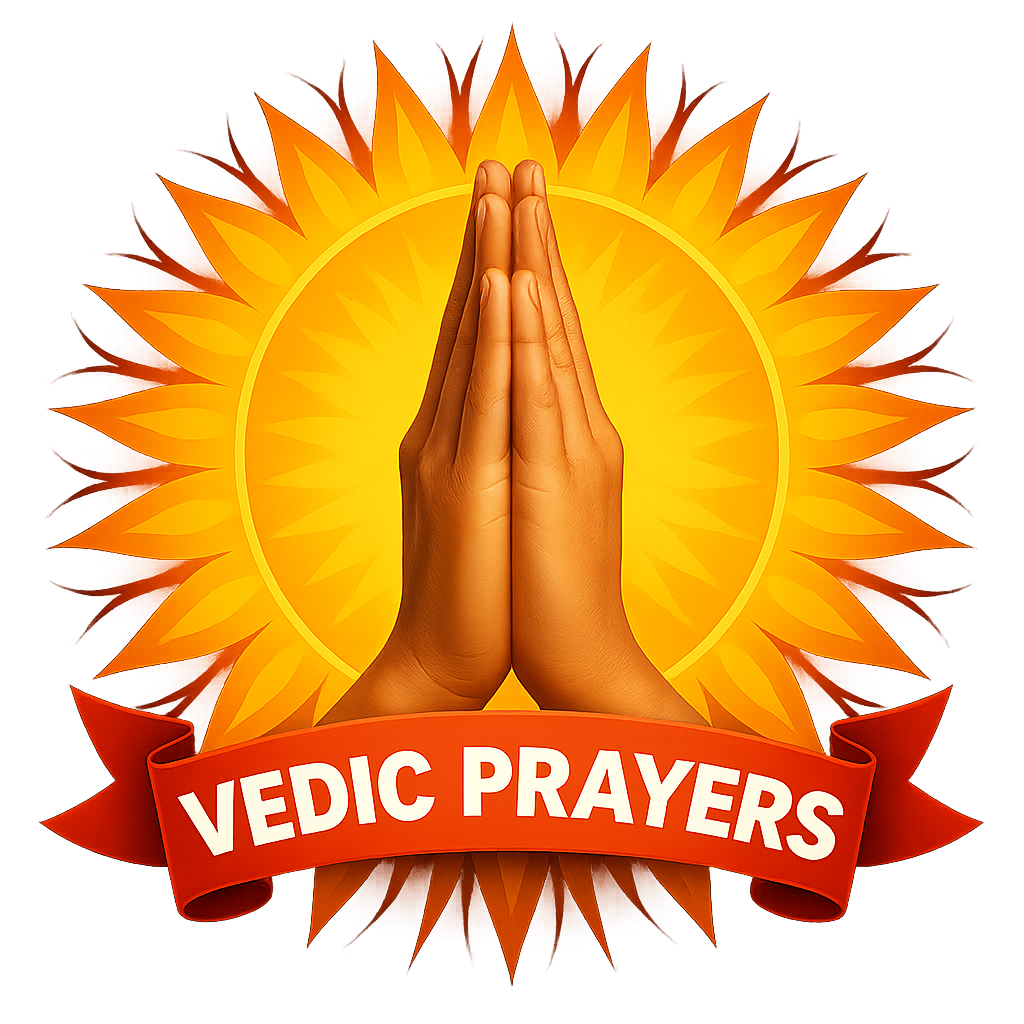
What is Hal Shashthi Vrat?
Hal Shashthi Vrat, also known as Lalhi Chhath, Har Chhath, or Balarama Jayanti, is celebrated as the birth anniversary of Lord Balarama, the elder brother of Lord Shri Krishna. This fast is observed on the sixth day (Shashthi Tithi) of the Krishna Paksha of the month of Bhadrapada.
Lord Balarama is associated with the Hal (plough), which is his primary weapon and symbol. It is said that Lord Balarama used the plough to prepare the earth for cultivation and also as a divine instrument in various leelas.
Religious and Mythological Significance
According to the legend, upon witnessing the struggle and grief of a certain king due to the loss of his child, Lord Shri Krishna advised the parents to observe this vrat. By doing so with devotion and discipline, they were blessed with protection for their child, longevity, and prosperity.
It is believed that devotees who perform this vrat with sincerity are blessed with the safety and long life of their children, along with happiness and prosperity in their homes.
In local traditions, this vrat is mainly observed by married women to seek blessings for the well-being and longevity of their children.
Hal Shashthi Vrat 2025 — Date & Auspicious Timing
In 2025, Hal Shashthi Vrat will be observed on 14 August (Bhadrapada Krishna Paksha Shashthi), as per major Hindu Panchangs.
The Hindu calendar for August 2025 also clearly states:
“14 August – Balarama Jayanti (Hal Shashthi)”
Shashthi Tithi Start and End Timing:
- Start: 14 August, around 12:30 PM
- End: 15 August, morning (timing may vary slightly depending on location and muhurta calculations)
Puja Vidhi (Step-by-Step Worship Process)
(A) Preparation for the Vrat
- Bath and Start of Fast: Take a bath early in the morning and wear clean clothes.
- Decorating the Courtyard: Make a square altar (chaukat) with cow dung and prepare the worship area.
- Installation of Idol/Picture: Place a small idol or symbolic representation of Lord Balarama, along with a small plough (hal).
(B) Puja Materials
- Turmeric, rice, seven types of grains (sata-naja), fruits, and flowers are essential for worship.
- Special Rule: On this day, food grown using a plough (tilled soil) is prohibited. Only naturally sourced grains and fruits should be consumed.
(C) Unique Ritual Practices
- Women observing the fast use Mahua tree twigs for brushing teeth.
- Instead of metal utensils, they eat using plates and bowls made from Mahua leaves (dona and pattal).
(D) Listening to the Vrat Katha
- Listening to the Hal Shashthi story (vrat katha) is considered highly auspicious. It brings blessings of happiness, prosperity, and protection of children.
(E) Conclusion of the Fast
- On the morning of 15 August, the vrat is concluded by consuming food that is free from plough-tilled grains and without using the plough in any form.
Social and Spiritual Importance
- This vrat is observed for blessings of children, longevity, and family prosperity.
- It also inspires the qualities of Lord Balarama — strength, compassion, and stability — in the lives of devotees.
- From a social perspective, the ritual keeps Indian traditions alive and helps pass them on to the next generation.
Summary: Key Facts
| Aspect | Details |
|---|---|
| Purpose | Celebration of Lord Balarama’s birth, blessing and protection of children |
| 2025 Date | 14 August (Bhadrapada Krishna Paksha Shashthi) |
| Puja Vidhi | Cow-dung altar, no plough use, natural grains/fruits only, vrat katha |
| Highlights | Mahua twig brushing, Mahua leaf utensils, avoidance of plough-tilled grains |
| Main Benefits | Blessings for children, family peace, spiritual purification |
Hal Shashthi Vrat is a beautiful and meaningful Hindu tradition celebrated as the birth anniversary of Lord Balarama. It is a day of devotion, family blessings, and spiritual cleansing.
In 2025, it will be observed on 14 August, with traditional yet deeply symbolic rituals — from Mahua twig brushing and avoiding plough-harvested food, to storytelling and heartfelt prayers.
This vrat is not just a religious custom, but a symbol of cultural heritage and spiritual consciousness. If you, your parents, or the women in your family observe it, it will become a way to strengthen faith and preserve tradition.
















